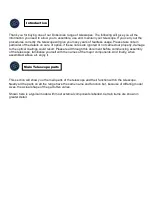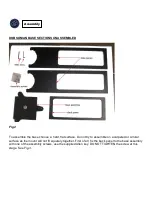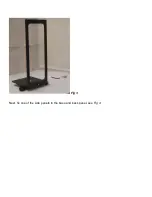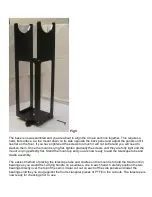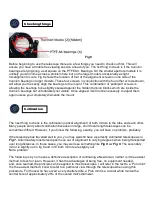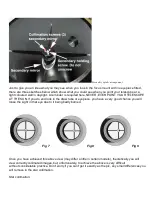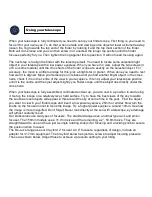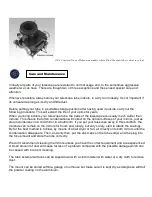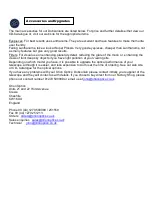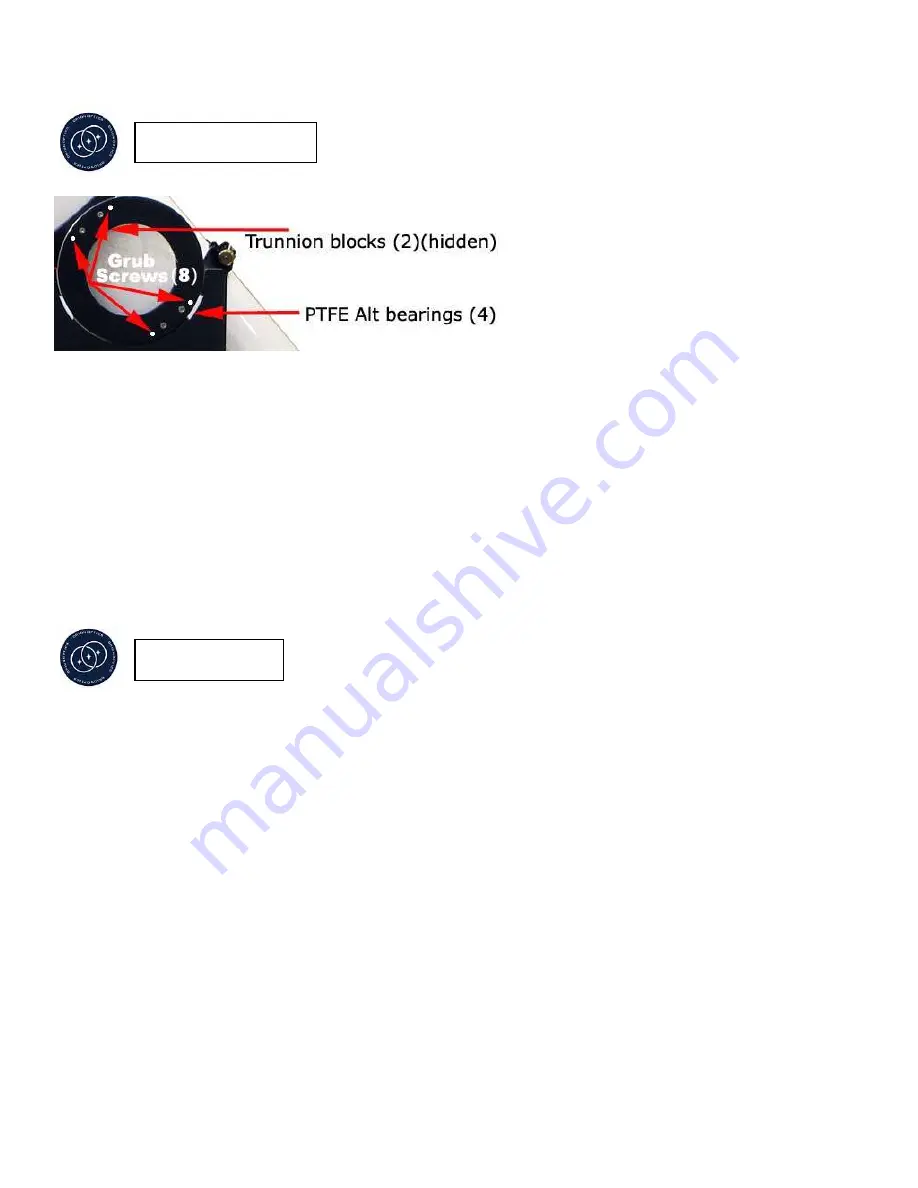
Fig 6
Before beginning to use the telescope there are a few things you need to check out first. This will
ensure you have a trouble free viewing session ahead of you. The fist thing to check is if the trunnion
bearings are lying snug a set square on the PTFE Alt. Bearings. On the smaller aperture models it is
unlikely you will come across a problem here but on the larger models occasionally a slight
misalignment occurs. Fig 6 shows the location of four of the alignment screws on one side of the
trunnion bearing on larger models. These four screws, in conjunction with the four other screws shown,
will allow you to exactly align the bearings to the mount. This combination of ‘push/pull’ screws is
allowing the bearings to be slightly skewed against the hidden trunnion blocks which are inside the
trunnion bearings but unfortunately not visible. Once aligned, it will not be necessary to adjust them
again unless you completely dismantle the mount.
The next thing to check is the collimation (optical alignment) of both mirrors to the tube and each other.
Many people worry about collimation because on large, short focal length telescopes can be
sometimes difficult. However, if you follow the following, exactly, you will have no problem, probably.
If the telescope has travelled well to you, you may well still have a perfectly collimated telescope as in
Fig 7.
Unfortunately most telescopes move out of alignment to varying degrees when being transported
over long distances. In those cases, you may well see something like
Fig 8 or Fig 9.
The secondary
mirror is slightly out in fig 8 and in f9, both mirrors are slightly out.
Not a problem:
The following is by no means a definitive description of collimating a Newtonian, neither is it the easiest
method to teach or learn. However, it has the advantages of being free, no equipment needed,
and, once learned, the principle can be applied to most telescopes. I will refer in the text to a `Polo mint'
It is the easiest method I know to refer to a particular view through the telescope when using this
procedure. For those who have lived a very sheltered life, a Polo mint is a circular white mint with a
central hole of approximately 25% of the overall mint's diameter.
Checking things
Collimation


